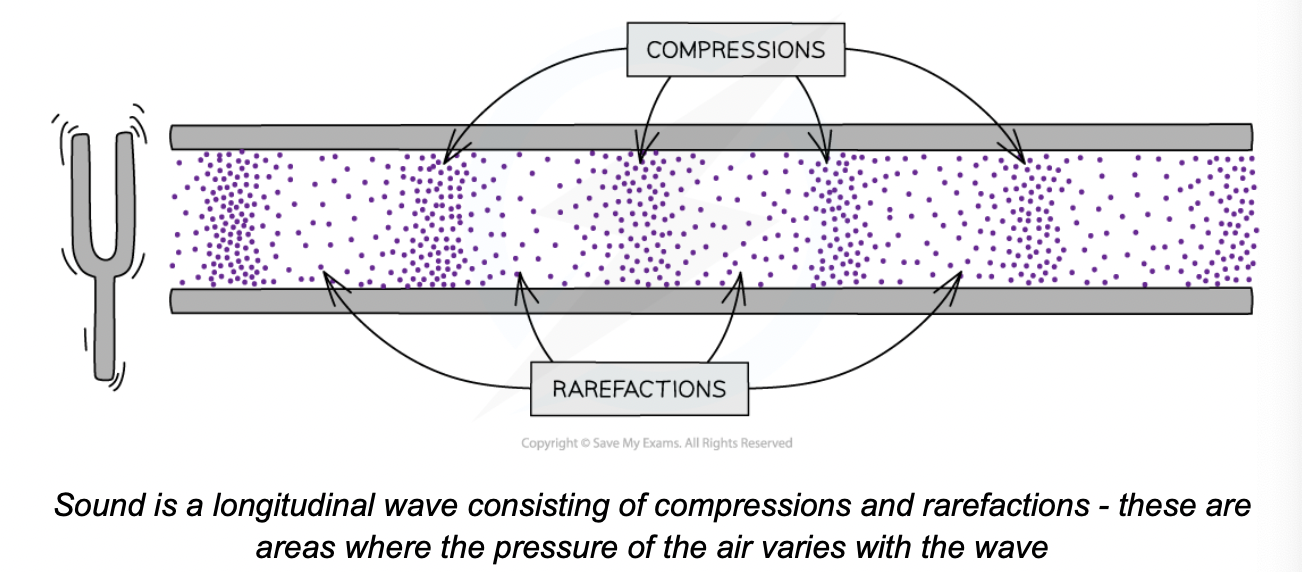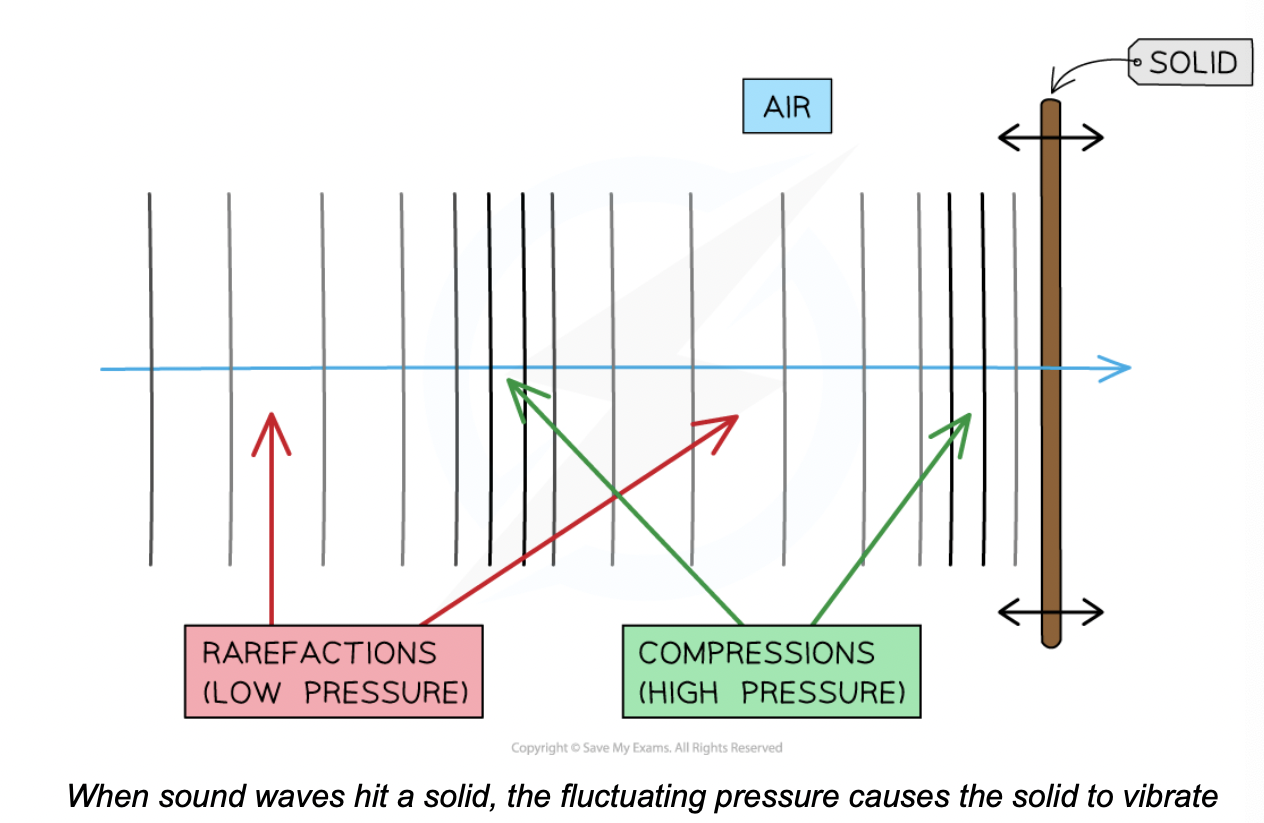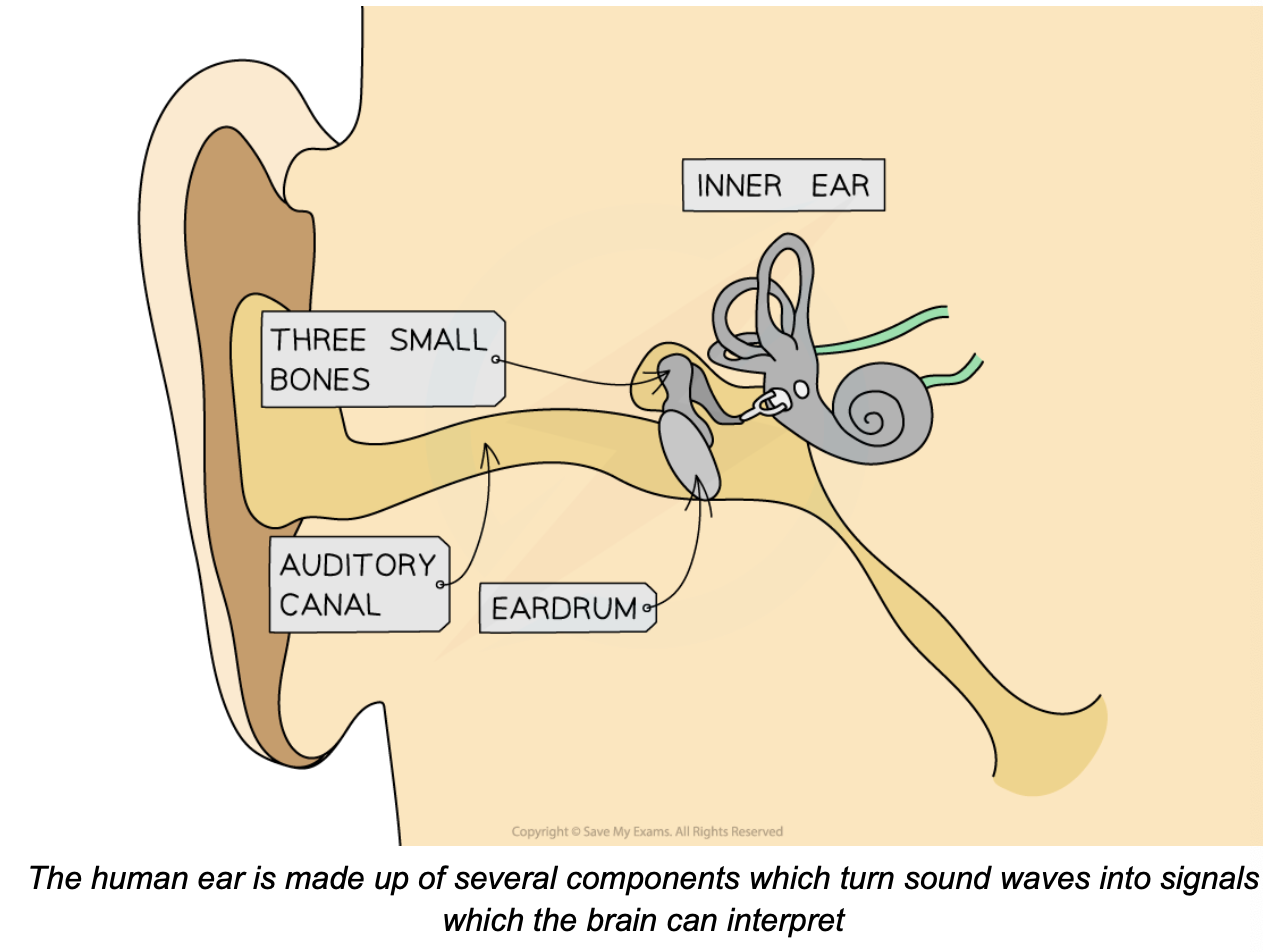Sound Waves
1/9
There's no tags or description
Looks like no tags are added yet.
Name | Mastery | Learn | Test | Matching | Spaced |
|---|
No study sessions yet.
10 Terms
what are sound waves?
Sound waves are vibrations of air molecules
what happens when a sound wave contacts a solid
When a sound wave comes into contact with a solid those vibrations of air molecules can be transferred to the solid
For example, sound waves can cause a drinking glass to vibrate
If the glass vibrates too much the movement causes the glass to shatter
what do sound waves consist of?
Sound is an example of a longitudinal wave, hence it consists of:
Compressions - regions of higher density
Rarefactions - regions of lower density

why do compressions and rarefaction cause in a sound wave?
These compressions and rarefactions cause changes in pressure, which vary in time with the wave
Therefore, sound is a type of pressure wave
what do waves contacting solids cause in terms of pressure?
When the waves hit a solid, the variations in pressure cause the surface of the solid to vibrate in sync with the sound wave

who can sound waves be heard by and why?
Sound waves can be heard by human beings because sound waves are transferred from the air to the solid components of the ear
what are sound waves transferred by in the human ear?
In the case of the human ear, the sound waves are transferred by two main solid components:
The eardrum which is made of tissue and skin
Three small bones

describe the journey of the sound wave in the human ear (6)
The sound wave travels down the auditory canal towards the eardrum
The pressure variations created by the sound wave exert a varying force on the eardrum causing it to vibrate
The vibration pattern of the sound waves creates the same pattern of vibration in the eardrum
The eardrum vibration is transferred to the three small bones
The vibration of these small bones then transfers the vibrations to the inner ear
In the inner ear, nerve cells detect the sound and send a message to the brain giving the sensation of sound
Why is the range of sound humans can hear limited?
The transmission of sound to the human ear only works over a limited range of frequencies
This limits the range of sound frequencies a human can hear
what is the range of frequencies a human can hear
The range of frequencies a human can hear is 20 Hz to 20 000 Hz